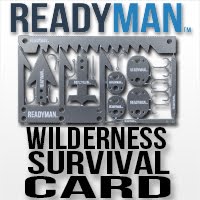Many airsoft BB gun users
take part in organized skirmishes - aka fake battles and survival scenarios. A
lot of people don’t believe in ‘playing’ with guns or allowing youngsters to
play with guns or take part in skirmish activities as they believe it’s setting
a bad example. However, using airsoft BB guns
and taking part in skirmishes can teach you a lot about being prepared and
surviving in any situation.
Honing your shooting skills
You may think that in real
life you will never need to know how to shoot a target, but at one point or
another, you may well need to be able to do so. Its one thing shooting targets at a shooting range; it’s completely another shooting a moving target during a
skirmish, which is why skirmishes are so useful when it comes to honing your
shooting skills. When it comes to surviving in the wilderness, being able to
shoot a moving target - ideally, at a distance away - is crucial. Proving that
skirmishes are an ideal way to do this, many police forces and military forces
use BB guns and skirmishes to help new recruits hone their shooting skills.
at a shooting range; it’s completely another shooting a moving target during a
skirmish, which is why skirmishes are so useful when it comes to honing your
shooting skills. When it comes to surviving in the wilderness, being able to
shoot a moving target - ideally, at a distance away - is crucial. Proving that
skirmishes are an ideal way to do this, many police forces and military forces
use BB guns and skirmishes to help new recruits hone their shooting skills.
Learning to work as part of
a team
Another important lesson
that skirmishes can teach you is working successfully as part of a team. If
you’re someone who watches survival films or war films even, then you will know
that when it comes to survival, teamwork is often crucial. Skirmishes teach you
how to not only look after yourself but also your team members, as well as how
to obey orders and do as you’re told. If you are put in a leading position,
skirmishes also teach you how to lead a team and determine who does what role
within it. When it comes to survival (and preparation), being a good delegate
is important - this is a skill that leading a skirmish team will allow you to
develop.
How to stay hidden
Just like in real wars, the
key to surviving when under attack is being able to stay hidden. Taking part in
skirmishes teaches you how to stay hidden by camouflaging yourself. It also
teaches you how to pick the opportune moment to reveal yourself and how to
determine when that is. Talking about careful thinking, it’s also crucial to
learn to use ammunition wisely, which is another key thing that skirmishes
teach you. You only have a certain amount of ammunition and have to learn to
make it last, if you’re going to survive, that is.
Adapting to different
environments
Last but not least,
skirmishes teach you how to successfully adapt to play in different
environments. Sometimes matches will be held outdoors in woodland areas other
times they will be held in indoor areas like old malls. If you’re going to
survive whatever is thrown at you, you need to know how to adapt to different
environments and use your airsoft skills successfully in each of them. They say
that practice makes perfect, so the more skirmishes in different environments
you compete in, the better.
Airsoft BB guns and
skirmishes can teach you a lot about being prepared and surviving anything,
from a Zombie apocalypse to a terrorist takeover.
Staying above the water line!
Riverwalker
Staying above the water line!
Riverwalker

























